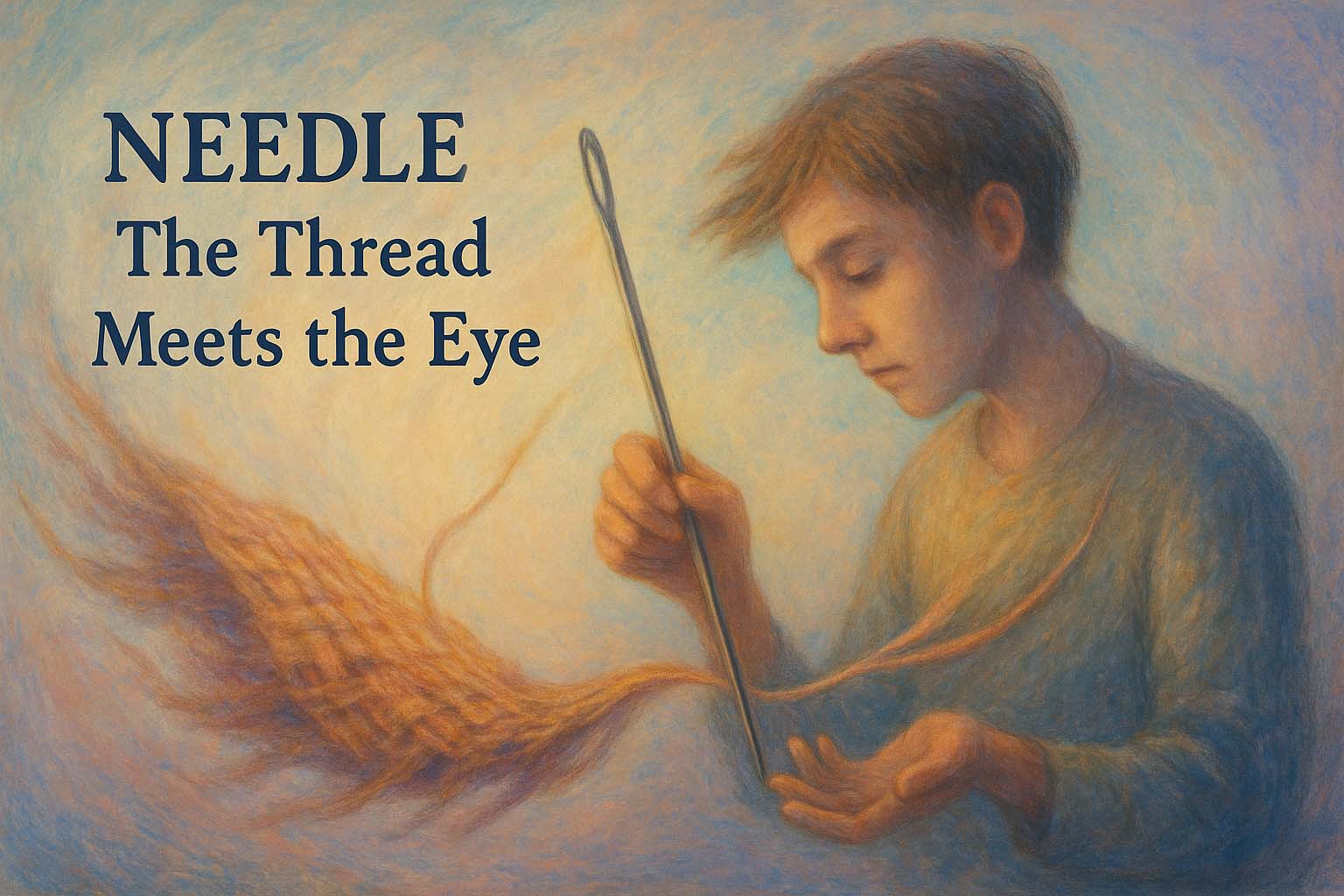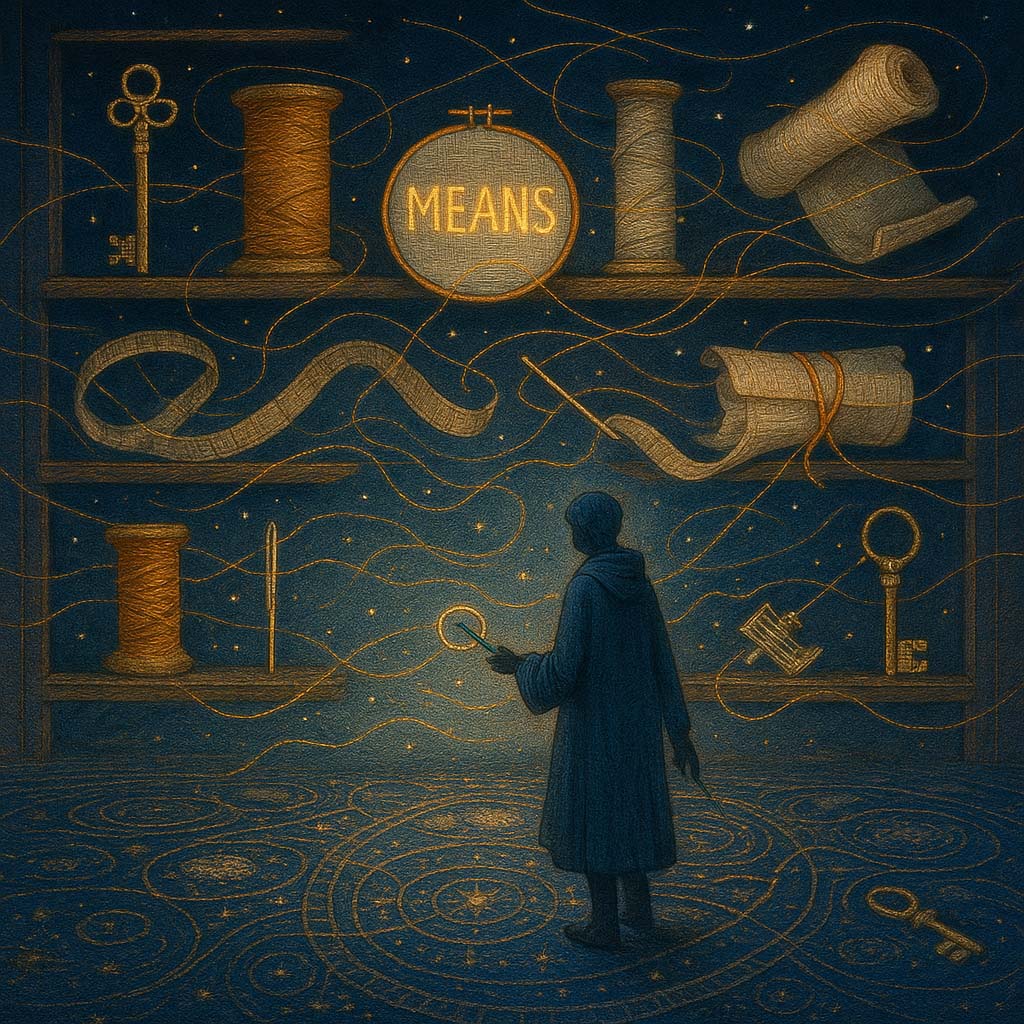

Intention: NEEDLE
The Thread Aligns with the Needle’s Eye
In this phase, the thread of suicidal ideation tightens and begins to align with action. What was once diffuse or ambivalent begins to concentrate. The individual may not yet have acted, but the inner movements have changed—preparation has begun. This is the space between thinking and doing, where plans take shape, routines subtly shift, and exits are quietly imagined. The NEEDLE framework guides clinicians through these fragile contours of intent. It allows us to map not only whether a plan exists, but how intention has been woven—through ambivalence, narrowing options, means access, rehearsal, and withdrawal. At this point, presence matters more than persuasion. Our task is not to tug the thread or cut it, but to sit close as it strains, to listen without fear, and if possible, to gently help it hold.
NEEDLE offers a structured way to explore the emergence of suicidal intention. It tracks the tightening thread from inner conflict through planning and proximity to action. The acronym stands for:
N – Navigating Ambivalence
E – Excluding Options
E – Examining Means
D – Drafting an Exit
L – Leaving Subtle Signs
E – Exploring the Exit
Each strand represents a moment of movement—deliberate or tentative—toward suicide. Clinicians are invited to trace these shifts with care, recognising when the cloth still has give, and when it begins to pull tight.
N – Navigating Ambivalence

Ambivalence is often present even as intention begins to take form. The person may feel both pulled toward death and held—however faintly—by life. This inner struggle deserves space. Rather than rushing to resolve the conflict, we gently explore it. “Have you ever felt torn between wanting to die and wanting to live?” “What were some of the main reasons that made life feel unbearable?” “What part of you was still hoping for something to change, if any?” Shneidman’s theory reminds us that suicide is rarely a pursuit of death, but an escape from psychic pain. Linehan’s Reasons for Living and Klonsky’s Three Step Theory both point to this balance: pain outweighing connectedness, but not yet without tension. When clinicians stay with the ambivalence—listening for hesitation, for small hopes or doubts—we may find the thread is not yet ready to pass through.
E – Excluding Options

As suicidal intent strengthens, other options begin to fade. The person may no longer believe in therapy, support, or the possibility of change. Suicide starts to feel less like one possibility and more like the only one. “Were there moments when suicide began to feel like the only option left?” “Did you stop considering other ways to cope or get help?” “Were your thoughts becoming more absolute, like ‘nothing will ever change’?” Beck’s Hopelessness Theory explains how narrowing cognitive frames can make all other futures feel closed. Exploring the exclusion of alternatives is not about forcing optimism, but offering enough room for new threads to appear, even if only slightly. “Could we explore together what it has been like to feel those doors closing?”
E – Examining Means

The contemplation of method marks a critical shift. The person begins to think not just of dying, but how. “Did you begin thinking about a specific method?” “How much thought or research went into the details?” “Was the method you considered something already accessible to you?” In the IMV model, this is the start of the volitional phase—when thought becomes structure. The presence of means, particularly highly lethal or readily accessible ones, sharply elevates risk. But this is not only a question of danger—it’s also deeply symbolic. “When you think about the method, what made it feel like the right choice—was it about certainty, ease, or something else?” By exploring these questions with sensitivity, we can begin to assess not just risk, but readiness—and potentially introduce collaborative safety strategies.
D – Drafting an Exit

Even before final decisions are made, many people begin to prepare. These preparations are often quiet: “Did you start organising things in ways that might not have been obvious to others?” “Did you make a list, set a date, or settle financial or legal matters?” Michel and Valach describe these as “suicide scripts”—structured patterns of disengagement. These steps are often tentative, even unconscious, yet they reflect an emotional movement toward closure. “What do you think others might have missed that now seems more significant?” “Were there small changes or steps you took that now feel connected to what you were feeling inside?” Drafting is not yet departure—but it marks a moment where care, if offered with respect, may still redirect the weave.
L – Leaving Subtle Signs

Goodbyes often unfold in silence. A sudden generosity. A quiet withdrawal. A cryptic message. These small acts may seem benign at first but take on meaning in hindsight. “Did you give away personal items or stop doing things that mattered to you?” “Were there things you said or did that carried deeper meaning at the time?” Joiner’s theory of thwarted belonging helps explain how such gestures may be final acts of disconnection. “Looking back, were there small changes in your routine that now feel like part of a goodbye?” When we notice these shifts—emotional or behavioural—we don’t confront them, but invite reflection: “As you think about the past few weeks, were there moments that now feel like you were stepping back from the world in small ways?”
E – Exploring the Exit

In this final strand, we explore moments when the person came close to action—but paused. These are the near misses, the rehearsals, the standing on the edge. “Were there moments when you came very close to going through with it?” “What helped you pause or stop in the end?” “Did you rehearse or test out what it might be like—like visiting a location or composing a note?” Rudd’s Fluid Vulnerability Theory and the Cusp Catastrophe Model highlight the precarious nature of these moments. Yet, the fact that the person turned back—however briefly—is a thread worth catching. “Could we walk through one of those moments together—what helped you step back, even if just for a little while?” These moments may be windows, not just into risk, but into the parts of the person still open to holding on.
Meet Sara – Our Roleplay Character
Sara is a 34-year-old graphic designer, recently unemployed and feeling deeply ashamed about her financial dependence on family. She describes herself as “a disappointment,” and admits to considering suicide as a way to relieve the burden she believes she has become. While she hasn’t spoken of a specific plan, she shares that she’s been organising her files, visiting suicide-related websites, and withdrawing from friends. As her clinician, your task is to explore these signs with care—using the NEEDLE framework to trace whether the thread of thought is now aligning with action.
What You’ll Take Away from NEEDLE Masterclass
- Practical strategies for exploring suicide planning without escalating fear or losing connection
- Confidence in identifying the emotional and behavioural shifts that signal increasing intention
- A six-strand conversational framework to pace and personalise risk exploration
- Tools to introduce means safety and alternative options without coercion
- Role-play experience in holding emotionally charged conversations with nuance and depth
- Deeper attunement to narrative shifts, sudden escalations, and the subtle signs of preparation
- The ability to listen for what still holds the person—hope, hesitation, history—and build from there
Join STEPS training to learn how to trace the thread—before it pierces through.
Because even at the edge, there is still time to hold, to ask, to mend.

